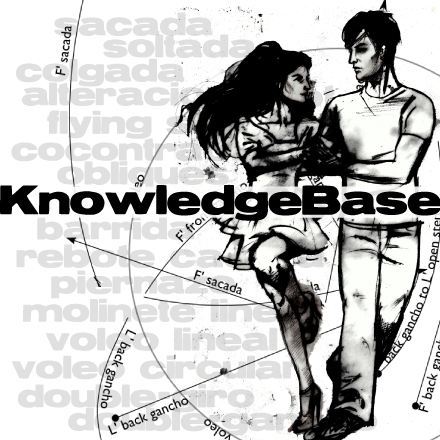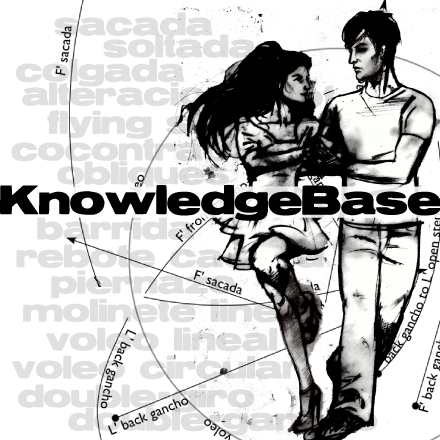 In volcada, the partners lean toward one another.
In volcada, the partners lean toward one another.
This is an intensification of the arch of connection, with a wider base, forcing the partners to rely on the arch for balance.
Permission
The distinct aspect of the mark for this movement is communicating the permission to lean. This is a change of embrace.
The change is flexion of the elbow joints, less than 2cm. Once the Revel has begun to lean, both partners must immediately initiate co-contraction in the upper arms (biceps+triceps) to support the position. This muscle activation will fortify the external rotation of the shoulder joints.
Structure and Size
Once the permission has been communicated, and the embrace adjusted, the Mark can now fulfil the volcada. To do this, he steps one foot backward, extends its knee, and levers his hips over its toes, while extending his shoulder joints.
The Revel’s hips and shoulders and base leg’s knee will match his exactly. Her hip flexion is what makes her light in this movement.
Both partners intensify the co-contraction in their upper legs (quadriceps+hamstrings) to support the intensified arch.
The structure of the bodies must sustain the arch throughout the movement, keeping the two arcs aligned on one vector. If the arcs mis-align, the partners will not be able to balance one another, and they will fall.
The weight and drama of the movement correlate to the size of the Mark’s backward step.
Ending
The Mark may bring both feet together at the furthest point, or he may sweep the freed front leg in a circle.
To end the volcada, he should not push on the revel, which will destabilize the arch, but just make a small front step, righting his own body with his feet at a normal distance.
While stepping front, he may give her foot a diagonal projection into the cross (classic, but optional).
Projection & Variations
If the Mark uses a vertical circle to initiate the volcada, the Revel’s free leg will go up (knee flexes) before the permission and then project out into the volcada like a linear voleo.
If the Mark gives the permission during a spiral, the revel’s free leg will travel a half-circle to the foremost point.
If the Mark gives the permission during the Revel’s back projection, her free leg may move up into a back arabesque during the volcada (rare, but possible).
If she feels no projection, the default is to allow her free leg to fall into a front projection, following gravity.
If the Revel is in a cross or standing on both feet at the moment of the permission, she can keep her feet there during the volcada.
Do not try to turn the volcada until you can do a static one. To learn the science of turning, see the entry on leaning.











